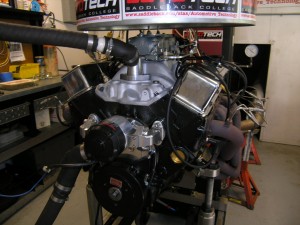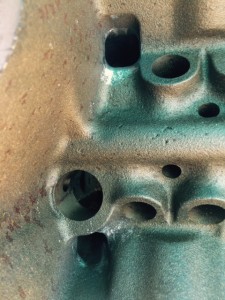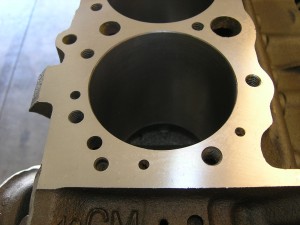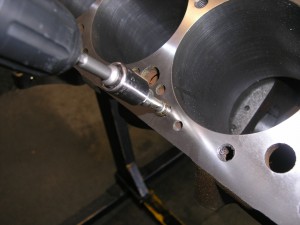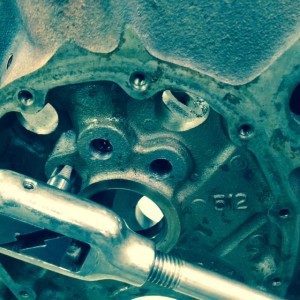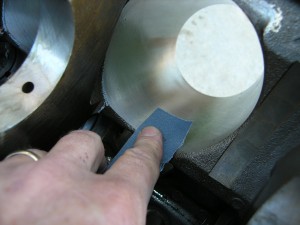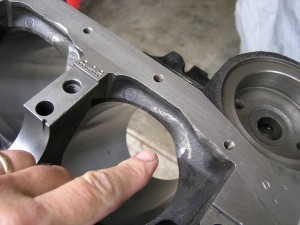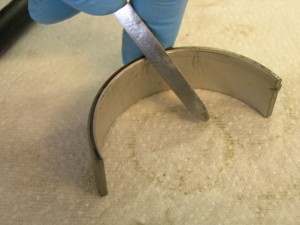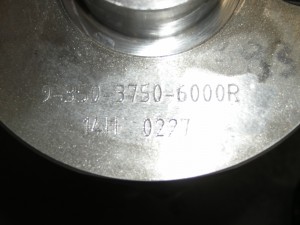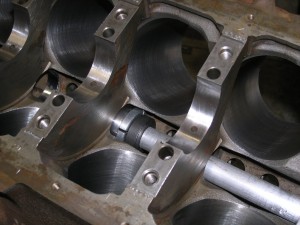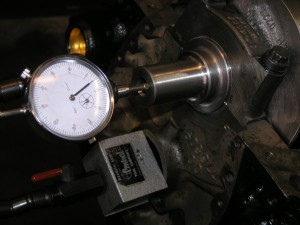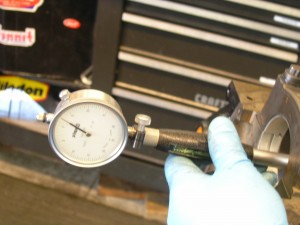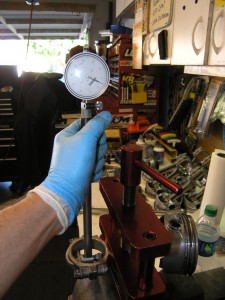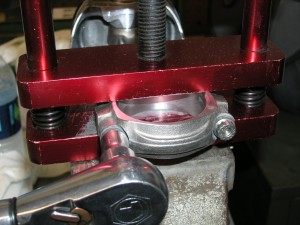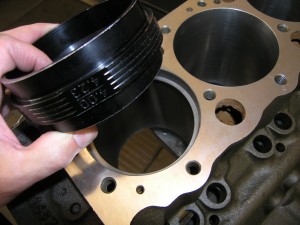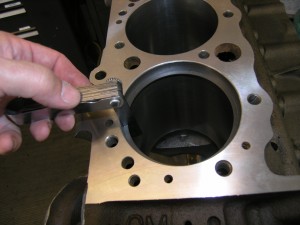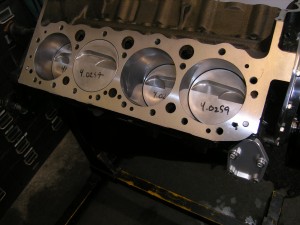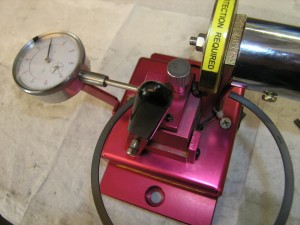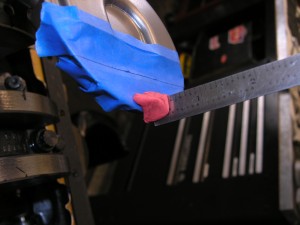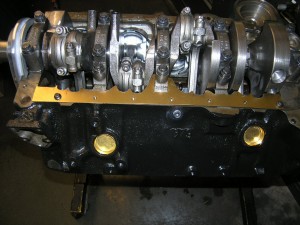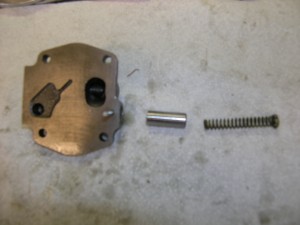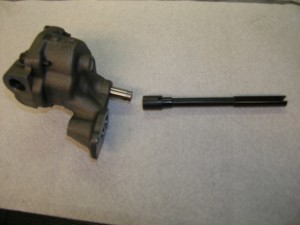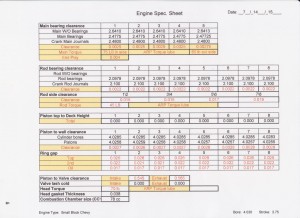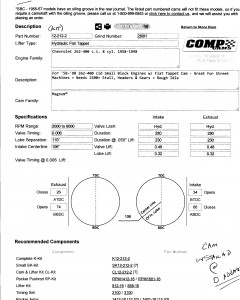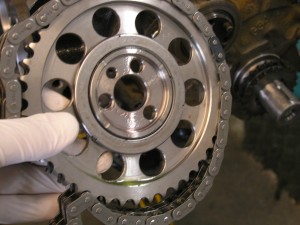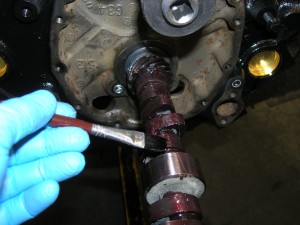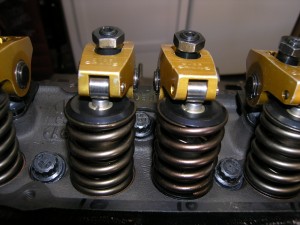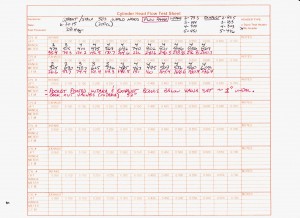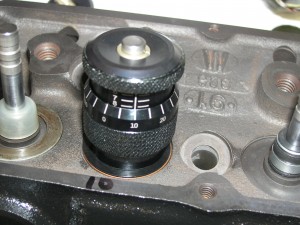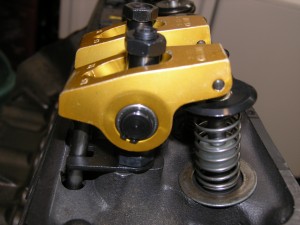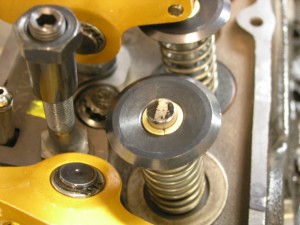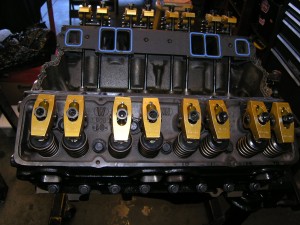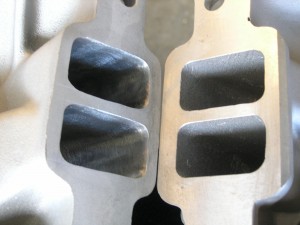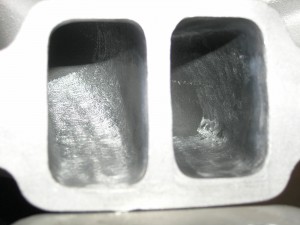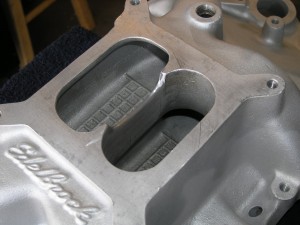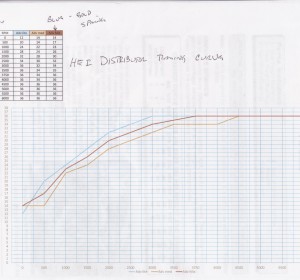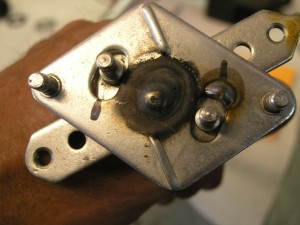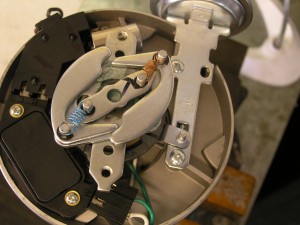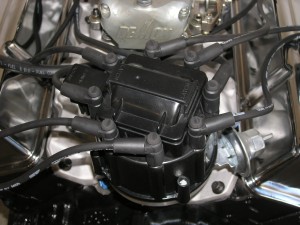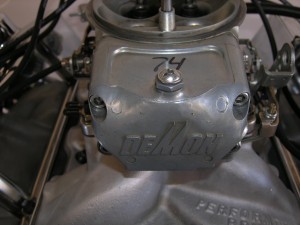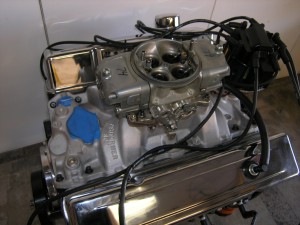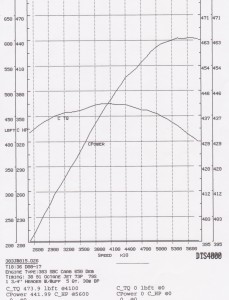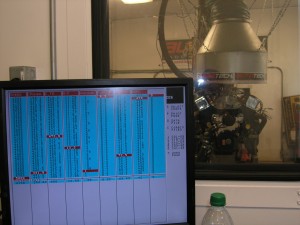440 Horsepower – 470 Ft-Lb Torque 383 Small Block Chevy
JMac Performance put together a 440 Horsepower 9.25/1 383 Small Block Chevy. The goal with this build was to make a strong streetable engine that has good street manners to be a daily driver and enough power to be competitive at the track or in an off-road vehicle. Here are the details from the parts selection to the dyno testing.
“Block Prep”
I started the build with a good factory 4 bolt main block. It was magnifuxed to make sure it had no cracks, bored and hone .030″ over (with a torque plate), line honed, then decked to ensure proper piston to cylinder head clearance and proper compression quench. All the block casting flash was removed and the oil return holes in the lifter valley were cleaned up and radiused.
Once all the machine work was done I cleaned all the bolt holes with thread chasers. I also chamfered the top of the cylinder head bolt holes to ensure the heads would sit flush on the blocks deck. The oil galley holes behind the timing chain were tapped so threaded pipe plugs could be installed.
The bottom of the cylinder bores were sanded with emery cloth to eliminate the sharp edge left by the machine work which can scuff of the piston skirts.
The block was thoroughly cleaned but not before the main galley plug was removed. Dirt and small metal shavings from the machine work usually hide behind this plug, if it is not removed and cleaned all the residue left behind will be cycled through your new engine at start up.
Once the machine work was complete and the block had been prepped and cleaned I started assembling the bottom end.
“The Bottom End”
I wanted the bottom end to handle at least 600 HP in case there were any power upgrades in the future. I used a SCAT bottom end kit with 3.75″ stroke crankshaft, 6.0″ connecting rods, KB pistons with floating wrist pin, Speed-Pro moly piston rings, and Clevite main and connecting rod bearings. Note: all the bottom end bearings received a light chamfering with a bearing sharper to eliminate any burrs.
Before I started assembling the bottom end I installed Dura bond performance cam bearings.
Next I installed the main bearings and checked the clearances, all the were at .0025″. I installed the crankshaft, torqued down the main cap ARP bolts (75 lb on the inner main bolts, 65 lb on the outer main bolts) then I checked the end play of the crankshaft which was .004″.
Next the pistons rings were cut and all the ring gaps were checked (.026″ top – .022″ Second, .015″ oil ring), the piston to cylinder wall clearances were verified (.0026″ – .028″), the connecting rod bearing clearances were checked, all were at .0022″, the pistons were installed on the connecting rods, the rings installed on the pistons, the pistons installed in the cylinders, and the connecting rods were installed on the crankshaft by torqueing the ARP con-rod bolts to 45 lb. Finally the connecting rod side clearances were checked (.017″ – .019″).
Finishing the bottom end I installed a Mellings standard pressure/standard volume oil pum and hardened oil pump shaft. I adjusted the oil pump pickup to oil pan clearance to 3/8″ and tack welded the pickup to the oil pump, and finally installed a crankshaft oil scraper. I blue-printed the oil pump to ensure the clearances were correct and ensured everything was in good working order before bolting it to the rear main cap and bolting down the oil pan.
Here’s a copy of the clearance spec. sheet
“Valve Train and Cylinder Heads”
“Camshaft and related parts”
A complete Comp Cams 12-212-2 valve train kit was used: camshaft, lifters, push rods, valve springs, retainers, and locks. The cam timing was degreed and showed 2 degrees of advance. Becasue the block had been line bored an upgraded -.005″ timing chain had to be used, I chose one with a torrington bearings to reduce friction on the block.
“Cylinder Heads”
A set of iron World Product Sportsman II 200 cc cylinder heads were used. They were pocket ported, the bowls below the valve seats were opened up and the intake valves received a 52 degree back cut to help with low lift flow numbers. The heads came with stainless steel 2.02″intake and 1.60″ exhaust valves. The heads were taken to Saddleback College in Mission Viejo Calif. and placed in the Super-flow flow bench to record the flow numbers. The cylinder heads combustion chambers were cc’d and found to be at 78cc’s. With a flat top piston and zero deck height the static compression ratio was 9.25/1.
The valve spring height was set to 1.800″ and the valve spring retainer to valve guide seal clearance was checked, there was plenty of room with over .850″. The push rod length and rocker arm geometry was checked. Notice: the use of Crane Cams full roller rocker arms and poly locks.
“Induction and Ignition”
Topping off the 383 is an Edelbrock RPM Performer intake manifold. It was match ported to the heads and the dividing bar between the dual planes was contoured to ensure equal distribution of fuel to all the cylinders. You can see the intake runners before and after match porting.
“Ignition system”
An aftermarket HEI distributor was used however, most aftermarket HEI distributors have a very slow/conservative timing curve. To help increase torque and low end horsepower I reset the distributor timing curve. I closed up the mechanical/centrifugal advance by welding up the advance slot. I took about .080″ out of the slot to reduce the total mechanical advance timing by 6 degrees. This allowed me to use a slightly higher initial timing (16 degrees instead of the usual 8-10 degrees) while keeping the total timing at 38 degrees. I then installed lighter advance springs to have all timing advance in by 3500 RPM. On the dyno this proved to add 8-10 ft-Lb torque between 2500 to 3500 RPM. To make sure the spark made it to the spark plugs MSD spark plug wires were used.
“Carburetion”
I used a Mighty Demon 650 CFM double pumper carburetor. It has removable idle and high speed air bleed jets so the fuel curve can be tuned.
An Edelbrock 650 carburetor was initially used during the dyno testing, the Demon carburetor was worth 20 more Horsepower and 20 more ft-lb Torque throughout the entire RPM range.
“Dyno testing Judgement day”
I bolted the 383 up to the DTS engine dyno at Saddleback College in Mission Viejo, Calif. to see what it could do. After a 20 minute initial run time to break in the camshaft I did a few low rpm pulls to set the timing, 38 total degrees is what worked best. Next I tuned the carburetor with a few main and high speed air bleed jet changes to get the fuel curve and air fuel ratio correct. Then I did a few full pulls from 2500 to 5800 rpm. It made 473 ft-lb Torque @ 4100 and 442 Horsepower @ 5600. It made 418 ft-lb torque @ 2500 and never made under 400 ft-lb torque through the entire rpm range.
Click the link below to watch the engine on the dyno
440 HP – 473 TQ Street 383 Small Block Chevy on the Engine Dyno
Click the link below to see a close up of the engine on the dyno
440 HP – 473 TQ Street 383 close up on the dyno
This engine is the best of all worlds! With it’s pump gas friendly 9.25/1 compression it can easily be used as a daily driver. With 442 Horsepower and 473 ft-lb of Torque it can get the average muscle car or street rod into the 11’s at the drag strip or dominate the off road in a 4 X 4 truck.

